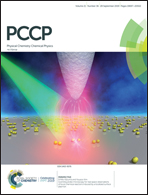Rechargeable Mg–M (M = Li, Na and K) dual-metal–ion batteries based on a Berlin green cathode and a metallic Mg anode†
Abstract
Mg–M (M = Li, Na and K) dual-metal–ion batteries featuring a dendrite-free Mg anode and an alkali–metal–ion storage cathode are promising safe energy storage systems. However, the compatibility between cathode materials and insertion cations might largely limit the electrochemical performance of the cathodes. In this work, three types of Mg–M (M = Li, Na and K) dual-metal–ion batteries are constructed with a Berlin green (FeFe(CN)6) cathode. The FeFe(CN)6 cathode is compatible with the dual-salt Mg2+/M+ (M = Li, Na and K) electrolytes, and delivers a high reversible capacity of 120 mA h g−1 at 50 mA g−1, with no capacity fading over 50 cycles in Mg–Na batteries. The Mg–Na battery also shows an outstanding rate capability, providing 85 mA h g−1 at 1000 mA g−1 and superior long-term cyclability over 800 cycles. The electrochemical performance comparison between Mg–Li, Mg–Na and Mg–K dual-metal–ion batteries demonstrates the significance of the appropriate hydrated ionic radius and dehydrated ionic radius for the insertion of cations with the FeFe(CN)6 cathode. This work provides new design strategies for stable and high energy density cathodes, and opens a new avenue for building safe and high-performance Mg–M (M = Li, Na and K) dual-metal–ion batteries for practical applications.



 Please wait while we load your content...
Please wait while we load your content...